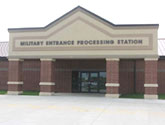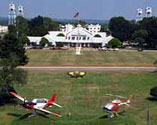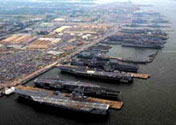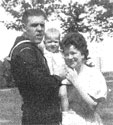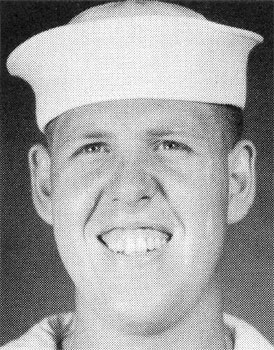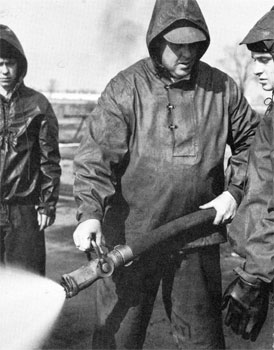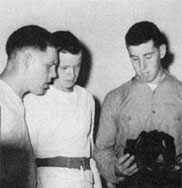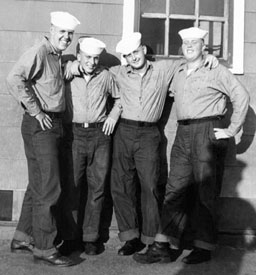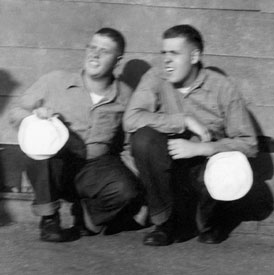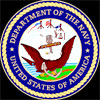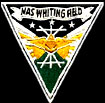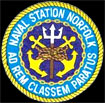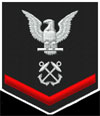| North
High School Wall of Honor Garey Allen Bryan Class of June, 1953 |
 |
|||||||||||||||||||||||||||||||||||||||||||||||||||||||||||||||||||||||||||||||||||||||||||||||||||||
| Research done by Claradell Shedd, Class of 1953. | ||||||||||||||||||||||||||||||||||||||||||||||||||||||||||||||||||||||||||||||||||||||||||||||||||||||
| Garey Allen Bryan | ||||||||||||||||||||||||||||||||||||||||||||||||||||||||||||||||||||||||||||||||||||||||||||||||||||||
|
Garey graduated in the June, 1953 North High class. His service number was 3247530. Garey's next of kin was listed as Mrs. Avis Bryan, 734 17th Street, Des Moines, IA. |
||||||||||||||||||||||||||||||||||||||||||||||||||||||||||||||||||||||||||||||||||||||||||||||||||||||
|
||||||||||||||||||||||||||||||||||||||||||||||||||||||||||||||||||||||||||||||||||||||||||||||||||||||
|
||||||||||||||||||||||||||||||||||||||||||||||||||||||||||||||||||||||||||||||||||||||||||||||||||||||
|
||||||||||||||||||||||||||||||||||||||||||||||||||||||||||||||||||||||||||||||||||||||||||||||||||||||
|
||||||||||||||||||||||||||||||||||||||||||||||||||||||||||||||||||||||||||||||||||||||||||||||||||||||
| **United States
Naval Training Center, Great Lakes, IL A veteran of two world wars and the Korean conflict, Great Lakes has served primarily as a recruit training establishment--bridging the gap from civilian to military life--by introducing recruits to Naval customs and discipline and preparing them through intensive training for the requirements of Naval service. During WWII, approximately 1,000,000 Blue-jackets were trained at Great Lakes--about one out of every three in the wartime fleet and twice the number trained at any other installation. At the end of WWII, Great Lakes consisted of approximately 1,000 buildings. Since then, these facilities have been utilized in the continued training of recruits and in the Great Lakes' expansion as an important advanced school center for the Navy. ***Whiting Field NAS US Navy Base, FL Located in the town of Milton, 30 miles northeast of Pensacola, NAS Whiting Field houses Naval Training Air Wing 5, Training Squadrons 2, 3 and 6, and Helicopter Training Squadrons 8 and 18. Naval Air Station Whiting Field, a United States Navy base located in Milton Florida, in central Santa Rosa County is one of the Navy's two primary pilot training bases; the other being Naval Air Station Corpus Christi, Texas. Naval Air Station Whiting Field also provides training for United States Marine, Coast Guard, and Air Force student pilots, as well as those of several allied nations. Naval Air Station Whiting Field is home to the Training Air Wing Five (TRAWING 5). Naval Air Station Whiting Field is surprisingly two airfields sharing a common support base. Primary Flight Training student aviators fly the T-34C Turbo Mentor from North Whiting Field (KNSE) while Advanced Helicopter Training takes place utilizing the TH-57 Sea Ranger at South Whiting Field (KNDZ). Naval Air Station Whiting Field is home to T-34 Turbo Mentor squadrons VT-T Doerbirds, VT-3 Red Knights, VT-6 Shooters. As well as TH-57 Sea Rangers HT-8 Eightballers, HT-18 Vigilant Eagles and the HT-28 Hellions. Naval Air Station Whiting Field has a large number of outlying fields such as Barin Field (Primary Student Solo Field: Area 1), Brewton Field (Secondary Student Solo Field: Area 2), Choctaw Field, Evergreen Field (Primary Student Solo Field: Area 2), Harold Field, Holley Field, Pace Field (Helicopter Field), Santa Rosa Field (Helicopter Field), Saufley Field (Closed since Hurricane Ivan), Silverhill Field (Area 1), Spencer Field (Helicopter Field) and Summerdale Field (Area 1). *****USS Ticonderoga (CV-14) USS Ticonderoga (CV/CVA/CVS-14) was one of 24 Essex-class aircraft carriers built during World War II for the United States Navy. The ship was the fourth US Navy ship to bear the name, and was named for the capture of Fort Ticonderoga in the American Revolutionary War. Ticonderoga was commissioned in May 1944, and served in several campaigns in the Pacific Theater of Operations, earning five battle stars. Decommissioned shortly after the end of the war, she was modernized and recommissioned in the early 1950s as an attack carrier (CVA), and then eventually became an antisubmarine carrier (CVS). She was recommissioned too late to participate in the Korean War, but was very active in the Vietnam War, earning three Navy Unit Commendations, one Meritorious Unit Commendation, and 12 battle stars. Ticonderoga differed somewhat from the earlier Essex-class ships in that she was 16 ft (4.9 m) longer to accommodate bow-mounted anti-aircraft guns. Most subsequent Essex-class carriers were completed to this "long-hull" design and are considered by some authorities[who?] to be a separate class, the Ticonderoga class. Ticonderoga was decommissioned in 1973 and sold for scrap in 1975. Redeployment in the Pacific on 31 January 1952, Ticonderoga came out of reserve and went into reduced commission for the transit from Bremerton to New York. She departed Puget Sound on 27 February and reached New York on 1 April. Three days later, she was decommissioned at the New York Naval Shipyard to begin the extensive SCB-27C conversion. During the ensuing 29 months, the carrier received numerous modifications – steam catapults to launch jets, a new nylon barricade, a new deck-edge elevator and the latest electronic and fire control equipment – necessary for her to become an integral unit of the fleet. On 11 September 1954, Ticonderoga was recommissioned at New York, Captain William A. Schoech in command. In January 1955, the carrier shifted to her new home port – Norfolk, Virginia – where she arrived on the 6th. Over the next month, she conducted carrier qualifications with Air Group 6 in the Virginia Capes operating area. On 3 February, she stood out of Hampton Roads for shakedown near Cuba, after which she returned via Norfolk to New York for additional alterations. During the late summer, the warship resumed carrier qualifications in the Virginia Capes area. She visited Philadelphia over Labor Day weekend to participate in the International Air Show. To demonstrate the power of her new steam catapults on three consecutive days she launched North American AJ1 Savages while standing at anchor in the Delaware River. The Ticonderoga next participated in tests of four new planes – the A4D-1 Skyhawk, the F4D-1 Skyray, the F7U Cutlass, and the F3H-2N Demon.[1] Ticonderoga then returned to normal operations along the East Coast until 4 November when she departed Mayport, Florida, and headed for Europe. She relieved Intrepid at Gibraltar 10 days later and cruised the length of the Mediterranean during the following eight months. On 2 August 1956, Ticonderoga returned to Norfolk and entered the shipyard to receive an angled flight deck and an enclosed hurricane bow as part of the SCB-125 program. Those modifications were completed by early 1957 and, in April she got underway for her new home port – Alameda, Calif. She reached her destination on 30 May, underwent repairs, and finished out the summer with operations off the California coast. On 16 September, she stood out of San Francisco Bay and shaped course for the Far East. En route, she stopped at Pearl Harbor before continuing west to Yokosuka Japan, where she arrived on 15 October. For six months, Ticonderoga cruised Oriental waters from Japan in the north to the Philippines in the south. Upon arriving at Alameda on 25 April 1958, she completed her first deployment to the western Pacific since recommissioning. |
||||||||||||||||||||||||||||||||||||||||||||||||||||||||||||||||||||||||||||||||||||||||||||||||||||||
|
||||||||||||||||||||||||||||||||||||||||||||||||||||||||||||||||||||||||||||||||||||||||||||||||||||||
|
||||||||||||||||||||||||||||||||||||||||||||||||||||||||||||||||||||||||||||||||||||||||||||||||||||||
|
||||||||||||||||||||||||||||||||||||||||||||||||||||||||||||||||||||||||||||||||||||||||||||||||||||||
|
||||||||||||||||||||||||||||||||||||||||||||||||||||||||||||||||||||||||||||||||||||||||||||||||||||||
|
||||||||||||||||||||||||||||||||||||||||||||||||||||||||||||||||||||||||||||||||||||||||||||||||||||||
| 08/06/13: Working on this page. Died 08/20/14. | ||||||||||||||||||||||||||||||||||||||||||||||||||||||||||||||||||||||||||||||||||||||||||||||||||||||
| Music: "Anchors Aweigh" by the U.S. Navy Band. | ||||||||||||||||||||||||||||||||||||||||||||||||||||||||||||||||||||||||||||||||||||||||||||||||||||||
| Home
|
Back/allyears |
WWI |
WWII |
Korea |
Vietnam |
Afghanistan/Iraq |
Lyrics
|
Refs/Awards |
Contact ©2025-csheddgraphics All rights reserved. All images and content are © copyright of their respective copyright owners. |
||||||||||||||||||||||||||||||||||||||||||||||||||||||||||||||||||||||||||||||||||||||||||||||||||||||
